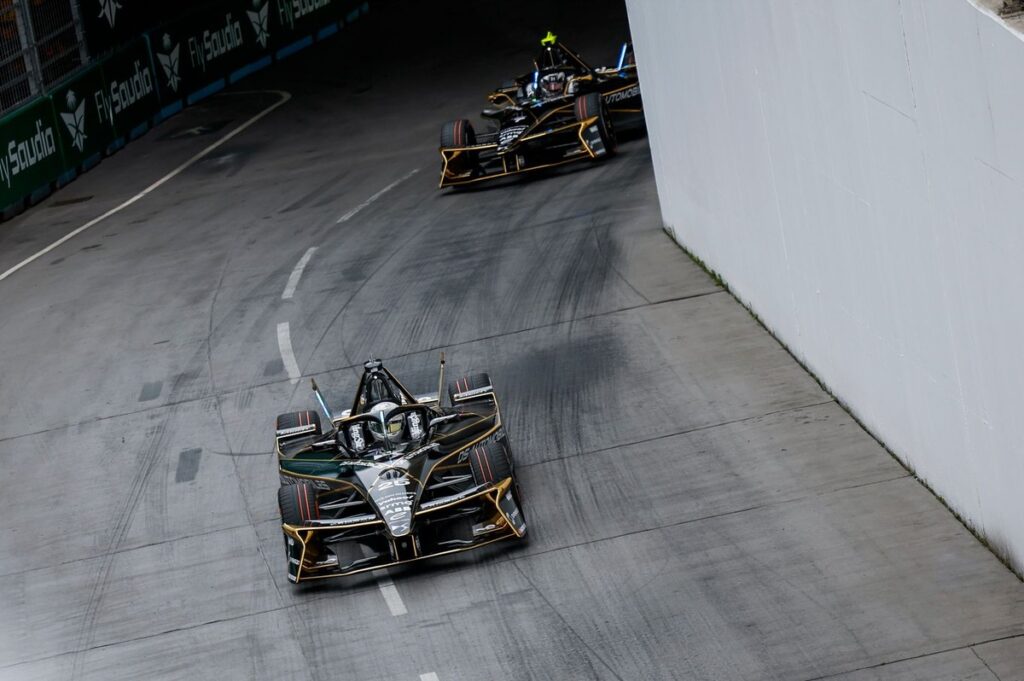As on the previous day, the day’s programme was punctuated by a practice session at 10:00 local time, followed by qualifying at 12:20 local time and the start of the race at 17:03 local time. However, track conditions were more favourable, with milder outside temperatures and a track cleaned by the previous day’s extensive running.
As a result, lap times improved slightly at a faster overall pace. Based on the data collected on the first day, the DS Penske engineers fine-tuned the settings of the DS E-Tense FE25 cars. Jean-Eric Vergne and Maximilian Guenther returned to the pits with smiles on their faces, satisfied with the performance of their cars.
In qualifying, the tension was palpable. The two DS Penske drivers found themselves in the same group, and the 12 minutes spent on the track were particularly hard-fought. At every braking point, the cars flirted with the limits of grip, particularly on the tricky transition between the outside and inside of the London ExCeL. Several drivers lost precious time there, including Vergne, who went straight on during his fastest lap. That’s how he missed out on the quarter-finals.
Guenther, meanwhile, put in a clean and fast lap to qualify for the duels. Up against Pascal Wehrlein’s Porsche, the 82% favourite according to the championship’s artificial intelligence tools, Guenther defied the odds and reached the semi-finals. There he faced Dan Ticktum, whose Kiro Cupra also benefits from a powertrain from the German manufacturer. This time the DS Penske driver was unable to hold off his rival, but a penalty subsequently imposed on Ticktum allowed Guenther to start from 2nd on the grid. Vergne, meanwhile, started from 13th place.
Maximilian Guenther, DS Penske
Photo by: DPPI
DS Penske secure points
For this final race of the season, the format was reduced to 34 laps, three fewer than the previous day. This time, the strategy was simplified: no Pitboost procedure requiring a recharge stop, but two Attack Mode periods, allowing the power to be increased from 300 to 350 kW for a total of eight minutes, with the temporary benefit of all-wheel drive. The start went smoothly. Guenther got off to an excellent start and held his position between the two Jaguars. As always in Formula E, energy management is crucial, and leading the race is not always the best option. Guenther chose to stay in the leading group, without pushing too hard, in order to conserve his resources.
Meanwhile, Vergne quickly gained positions and moved into the top 10. He then brilliantly held off three opponents in Attack mode, defending his place with authority. However, he was then forced to give up a few places when he activated his final Attack mode, just as the race director decided to extend the race by two laps due to previous neutralisations. At the end of the London finale, Guenther finished seventh, while Jean-Éric Vergne crossed the finish line in 15th position.
DS Penske ended its 2024-2025 campaign in fifth place in the team standings. This is a solid result for DS Automobiles’ 10th season in Formula E, where it is the most successful manufacturer with four world titles (two drivers’ titles and two constructors’ titles).
In this article
Be the first to know and subscribe for real-time news email updates on these topics
Read the full article here

